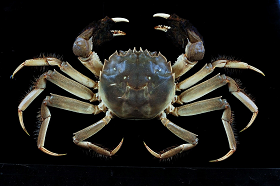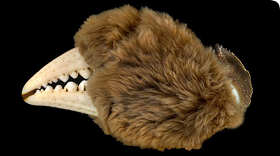Chinese mitten crab

[Image: University of Valencia]
Status in New Zealand
Not in New Zealand
Legal Status in New Zealand
Unwanted organism
Description
The Chinese mitten crab is native to China, the Korean Peninsula and Japan. It has been introduced to north eastern Europe, both coasts of the United States and eastern Canada. In some instances, the Chinese mitten crab may have been introduced purposely for human consumption but it is also transported as larvae in vessel ballast water or as juveniles and adults within hull fouling. The Chinese mitten crab spends most of its life in freshwater environments but migrates en mass to brackish (salty) waters to mate and reproduce. A single female can produce 250,000 to 1 million eggs brooding eggs that hatch as swimming larvae from winter through to early summer. Larval crabs develop in the plankton in coastal waters and settle as juveniles back into estuarine habitats. They then migrate upstream into freshwater environments, sometimes as far as 1500 km inland, where they grow into adults.
Why is it a problem?
In its introduced range, the Chinese mitten crab can reach very high densities. It has a broad diet and may compete with native species for food and habitat. The sub-adult crabs burrow extensively into river banks increasing the rate of erosion and can even cause levees to fail. The mass migrations can also be a nuisance to fishers through consuming fishing bait and fish caught in nets. The Chinese mitten crab is also be an intermediate host for the Oriental lung fluke (Paragonimus westermani) that can infect humans if they consume raw or under-cooked individuals.
 Hear about the impacts of the Chinese mitten crab in the UK and USA and find out how to recognise them.[Jonathon Phan]
What do they look like?
Key features
|
The Chinese mitten crab is brown-orange to greenish-brown in colour. It has a round body with four spines down each side, a distinctive notch between the eyes and legs which are normally twice as long as its body width. Adults have characteristically dense patches of hairs ("mittens") on both claws and this is how the species gets its name. |
 [Image: Phill Crabb, Natural History Museum] |
Download an identification guide
- Chinese mitten crab i.d. guide [1.7 MB]